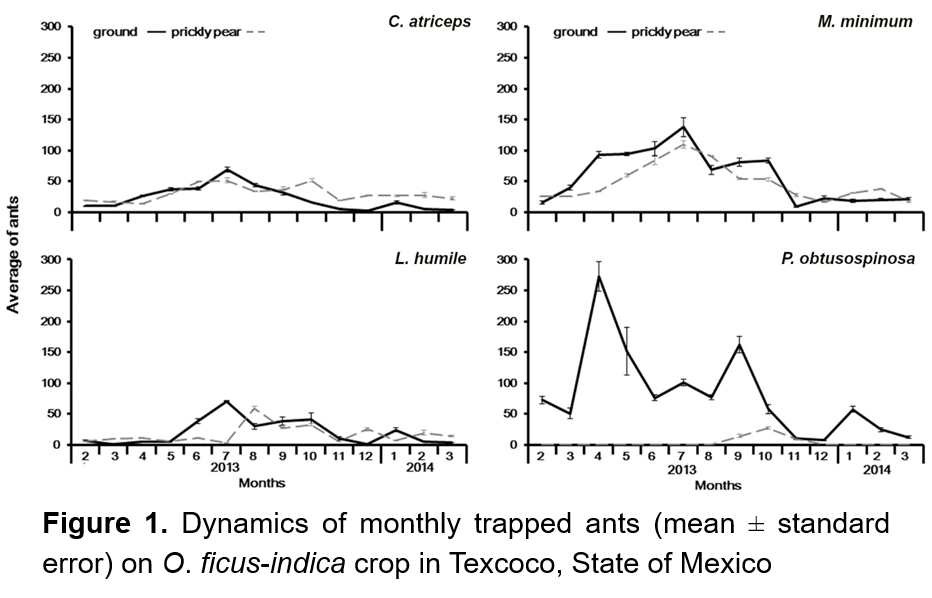Ants associated to prickly pear cactus crop in Texcoco, State of Mexico
DOI:
https://doi.org/10.56890/jpacd.v25i.510Palabras clave:
Opuntia ficus-indica, Formicidae, Dactylopius opuntiae, antagonism, Hyperaspis trifurcata, Laetilia coccidivora, Melitara nephelepasaResumen
In Mexico, center of domestication of prickly pear cactus species (also called “nopales”) few studies exist on insects associated with this crop. The studies are scantier on ants, since the majority are not considered to be pest. For this motive, the population dynamics of the ants was studied in experimental prickly pear crop in the installation of Colegio de Postgraduados, Mexico. The sample was fortnightly performed from February 2013 to March 2014. Ants were gathered with pitfall traps and arboreal traps, all of them with three baits and others without bait. Also recorded raiding, the nests in crop and inside to the cladodes. We collected a total of 10,953 individuals (74 % on ground and 26% on prickly pear cladodes), and seven species were determined: Hypoponera opacior (Forel), Neivamyrmex nigrescens (Cresson), Pogonomyrmex barbatus (Smith), Linepithema humile (Mayr), Camponotus atriceps (Smith), Pheidole obtusospinosa Forel and Monomorium minimum (Buckley). The last four were more abundant and frequent. We discuss the presence and nesting of ants in crop and their association with other insects of prickly pear crop.
##plugins.generic.pfl.publicationFactsTitle##
##plugins.generic.pfl.reviewerProfiles## N/D
##plugins.generic.pfl.authorStatements##
Indexado: {$indexList}
-
##plugins.generic.pfl.indexedList##
- ##plugins.generic.pfl.academicSociety##
- Journal of the Professional Association for Cactus Development
- Editora:
- Professional Association for Cactus Development




